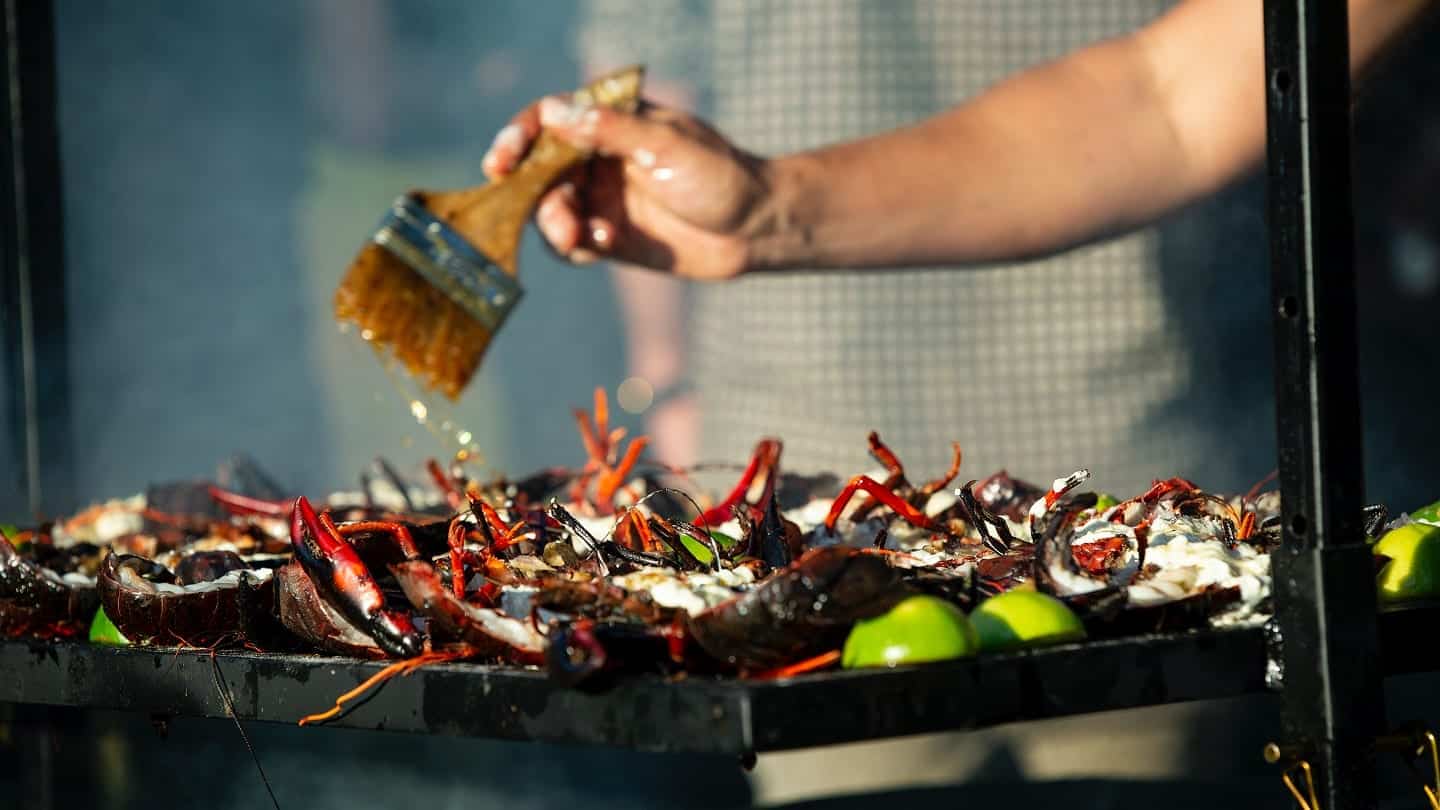
It’s summer, which, if anything, means it’s grilling season in Maine. If you are the master of your backyard grill, then learning how to grill lobster can be a big plus for you and all your lobster-loving friends and family. Though there are several ways to prepare lobster—boiling and steaming come to mind first—grilling lobster is an option that should not be overlooked. It gives the rich, sweet meat a smoky BBQ flavor that only an open flame can deliver.
More people eat lobster during the summer because so many lobsters are readily available. July through the early fall is the peak season for trapping and hauling. Lobsters migrate to the warmer waters closer to shore during the summer months, and most of them shed their old shells to grow into new ones.
Should I Grill Soft Shell or Hard Shell Lobsters?
For lobster aficionados, that means there are more soft-shell lobsters on the market than hard-shell lobsters. With soft-shell lobsters in abundance, they are less expensive. Some chefs would argue that they are easier to prepare and grill. The soft shell allows the grill’s heat to cook the lobster more quickly and evenly.
Today’s Live Maine Lobster Special
-
3 LB Live Maine Lobster$36.30
-
2.5 LB Live Maine Lobster$30.25
-
2 LB Maine Live Lobster$24.20
Other chefs would insist that the hard-shell lobster is better for grilling; the argument is that more meat is found in the older, hard-shell lobsters. This is true. A soft-shell lobster has yet to grow into its new shell; thus, a portion of its weight is the extra water it carries within the new shell until it grows into it. A new shell is also more fragile for grilling than an older, hard shell, which can withstand a grill’s rigors.
How to Prepare Lobster for the Grill
All of that said, whether soft-shell or hard-shell, the methods for grilling are essentially the same. However, as with any preparation for lobster, they must be properly stored alive before cooking. A lobster’s meat is not edible if it is not alive when cooking it. They must be refrigerated in the packaging they were transported in until cooked. Never store lobsters in cold water or place ice on them, either—freshwater kills lobsters. When it’s time for grilling, a fresh, live lobster can be swiftly and humanely killed. Dull its senses by placing it in the freezer for 10-15 minutes before cooking. Then place it belly up on a cutting board and, using a large, sharp kitchen knife, drive the blade between the antennae to split its skull in half.
Whole or Halved
It should be noted here that lobsters can be grilled completely whole or halved. Many recipes call for the latter to ensure more of the smoky, grilled flavor. After the lobster is dispatched, place it on the grill rack over medium-high heat (400F to 450F) if you choose to grill whole. Close the top and grill for about 5-6 minutes per side. When they are done cooking, the shell will turn bright red with a few darkened spots. To be certain, check the meat color by breaking one lobster open at the tail and body. The coloring of the meat should be opaque and white.
To halve a lobster for grilling, continue splitting it from the head down to the tail when dispatching it with a large kitchen knife. Once cut, the small grey sac behind the head should be removed, as should the black roe if it is a female, the green-colored liver, i.e., the tomalley, and the intestinal black vein that runs from the stomach sac to the tip of the tail.
Season Lightly
Once ready for the grill, add any seasoning—baste with olive oil or melted butter, salt, pepper, minced garlic—whatever is preferred. Place it on the preheated grill, medium-high heat, with the split side up. Close the top and let it grill for about 4-6 minutes. Open and baste with the oil or butter again, then cook for another 4-5 minutes. To preserve the juices, it’s suggested not to flip the lobster. The oil or butter will keep it moist.
Finally, the shell of a lobster’s claws is a little thicker and can take longer to cook. You can either remove them by twisting them from the carapace to be grilled separately for a couple of minutes longer or, if kept intact, cover the claws with a roasting pan or pie tin for the lobster to cook evenly.
It’s Going to be Quick!
Remember—once the lobsters are on the grill, monitoring them is important. They will cook pretty quickly. Overcooked lobster can dry out and turn rubbery and tough. Once the meat turns opaque and firms up, pull the lobster from the grill; it will continue to cook for a few more minutes once removed from the flame.
Get Ready to Impress
Grilled lobsters are delicious and easy to cook. There’s more time in preparation than the grilling. Once you get into the rhythm, you can impress your family and friends all summer!
For the highest quality fresh lobster from Maine, look no further than Klenda Seafood – we deliver live lobster directly to your door! We also offer curbside pick-up at our South Portland location if you live locally – call for details and to place your order over the phone!
Learn more about shipping methods and best practices, or contact us— we will happily answer any of your questions.

